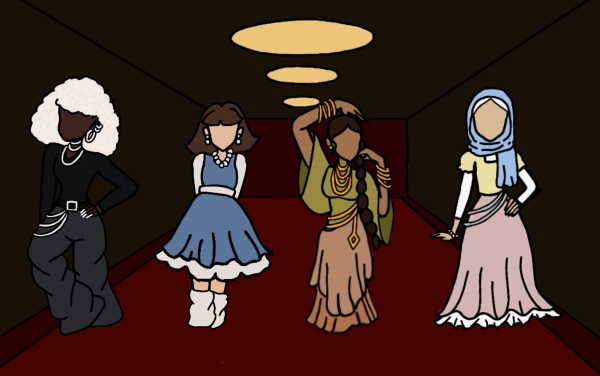When Reality meets Fantasy in Hollywood
“Black Widow” directed by Cate Shortland is an interesting take on what happens when a realistic antagonist meets a fantasy universe.
There has been one awaited movie in the Marvel Cinematic Universe ever since “Avengers: Endgame” came out in theatres, and that is “Black Widow”. “Black Widow” takes place before Endgame, therefore, all the events in this movie precede the final chapter in the Marvel Universe. There are many interesting and compelling aspects of “Black Widow” that other Marvel movies lack.
“Black Widow” is the culmination of when the true horrors of reality meet a superficial multiverse. In a universe of superheroes and supervillains, the main villain of “Black Widow” is a human trafficker that has no superpower, but still is able to strike fear in the viewer.
Cate Shortland, the director of “Black Widow”, gave a different perspective on the Marvel Cinematic Universe. For most movies in the fictional universe, there is usually one main villain that may possess unnatural powers that benefit them in their combat. However, in the brilliant mind of Shortland, “Black Widow” was released with a different type of villainous structure.
Dreykov, the main antagonist of this movie, created a room known as the “Red Room.” In this room they corrupted young girls, and trained them to be “widows,” which were armed young women tasked to take over parts of the world.
The whole premise of this horrific place was exposed in the introduction segment of the movie. Whilst a cover of Nirvana’s “Smells Like Teen Spirit” by Malia J played, the viewer could see the process of these innocent women being taken and ripped away from their families and home life.
As a widow, the main character Natasha Romanoff, portrayed by Scarlett Johansson, became a rogue widow that rebelled against the Red Room orders, and seeked vengeance on Dreykov and his team.
Throughout the movie, Romanoff and her sister Yelena Belova, portrayed by Florence Pugh, went searching for the Red Room to take down Dreykov and to free all the widows that were being forced into this place.
Belova throughout the movie shows examples of how innocence in someone’s life can be taken away. During one part of the movie, Belova is seen being childish by obsessing over a vest. For one, this scene could be argued that it was added for comedic effect. However, by digging a little deeper, you can see how some parts of her childlike personality remained.
In contrast, Belova in one of the fight scenes can be seen with mature instincts, which shows the opposite side of the spectrum.
“Black Widow” was a prime example of how realistic horrific events can interfere with a fantastic setting such as the Marvel Cinematic Universe. Dreykov’s existence is enough for most viewers to cringe while watching their favorite superheroes battle realistic concepts, instead of unrealistic villains.
I think that Shortland’s take on incorporating a realistic villain was able to capture the viewer’s attention a lot more than other Marvel movies. This is because of the fact that Marvel centralizes their main characters around superficial attributes. By going into intense detail about the Red Room and Dreykov’s character, Shortland was able to create a masterpiece of a movie.
Senior Sam Mueggenberg is in his third year on the Scepter. During school, he enjoys psychology class and likes to write in his free time.
Lily Ziebarth is a senior in her third year being on staff. She serves as the entertainment editor. Lily plays varsity volleyball and also runs the 400...











